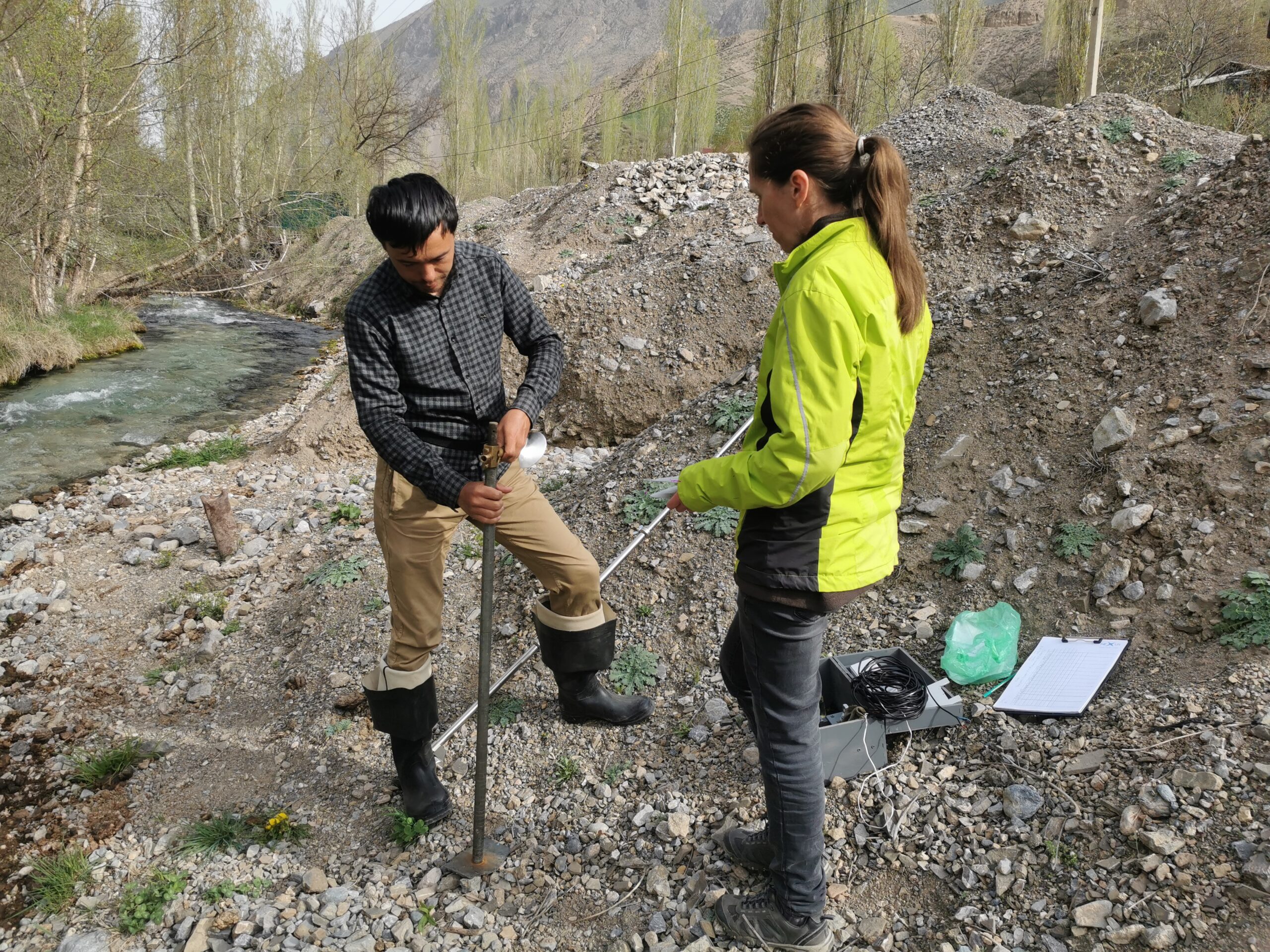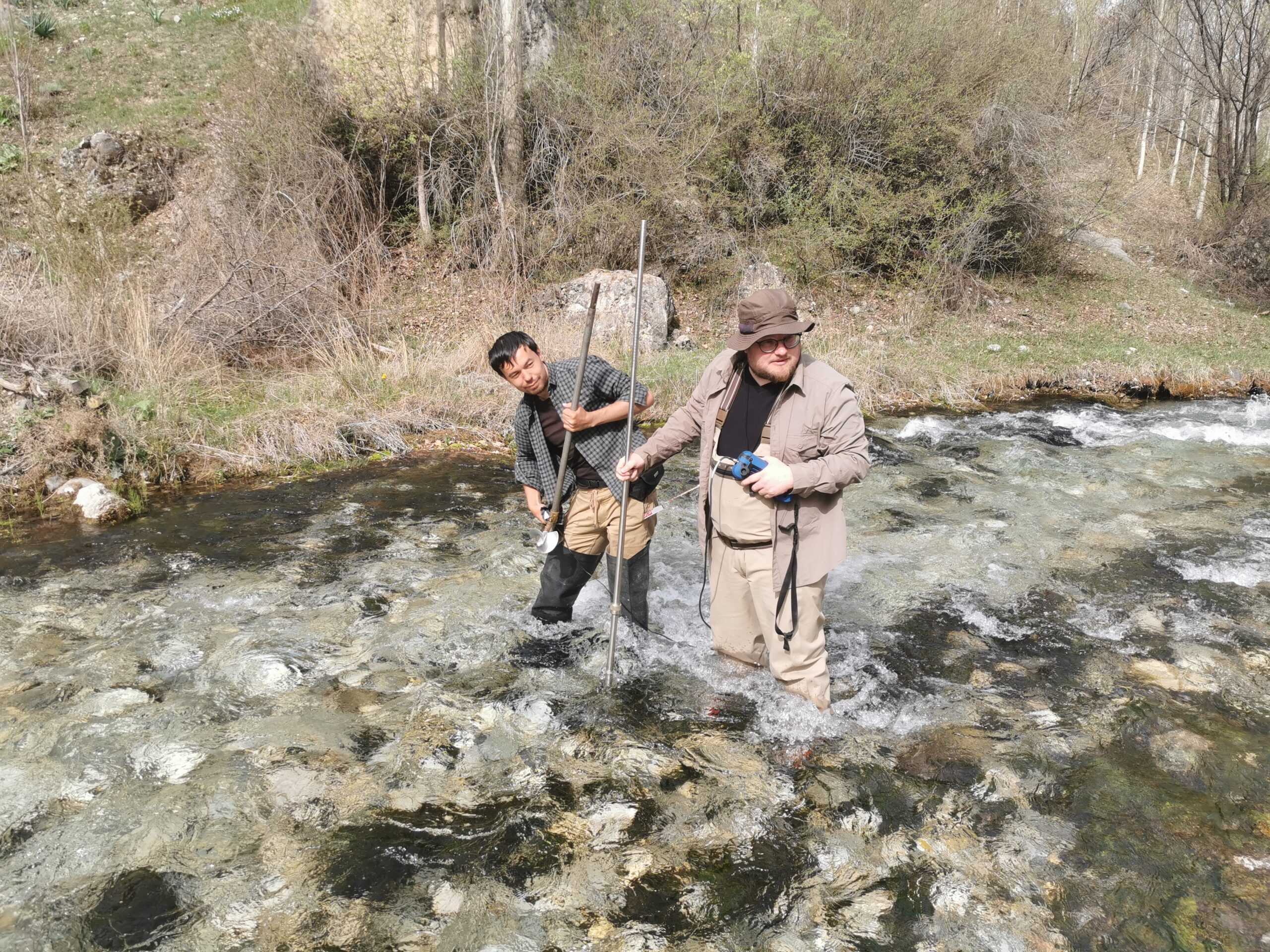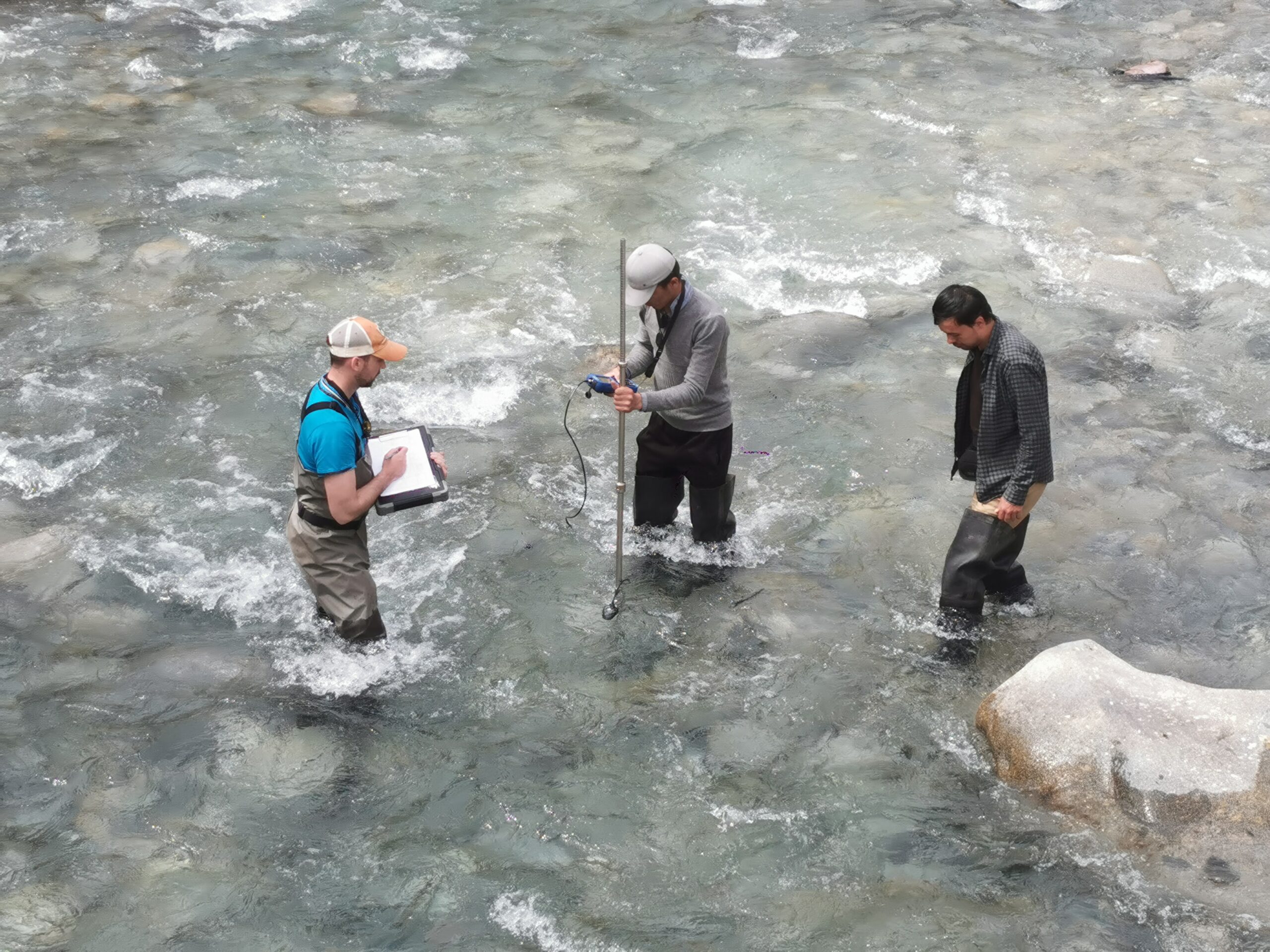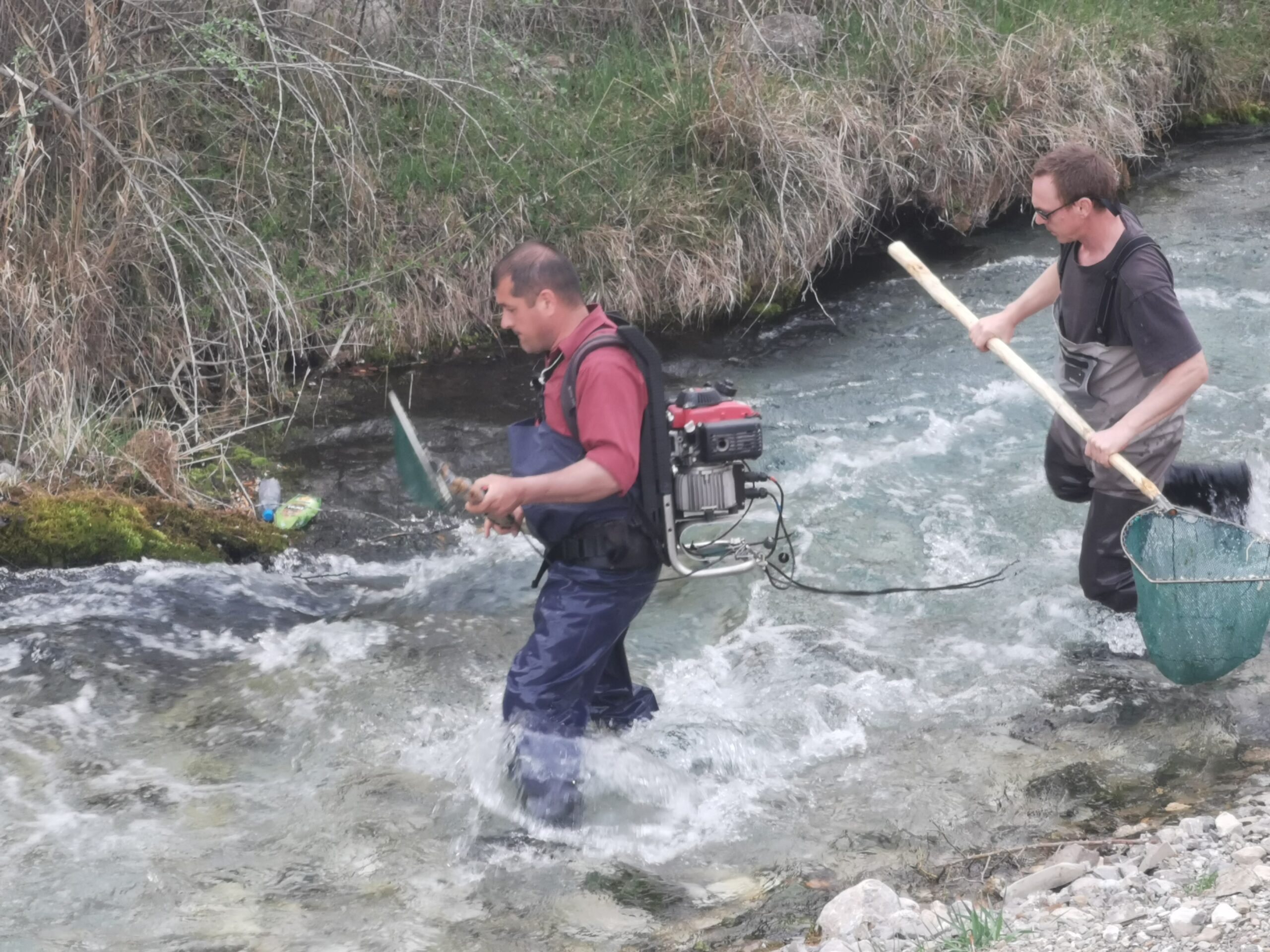Fieldtrip of the Hydro4U ecology team to Shakimardan Enclave (Uzbekistan)
After the successful first field mission to Central Asia of the Hydro4U consortium members in September 2021, the second mission took place from 31.3 – 12.04.2022 to Shakimardan Enclave (Uzbekistan). The mission was jointly organised by the Technical University of Munich (TUM) and the International Water Management Institute (IWMI). It was led by the University of Natural Resources and Life Sciences, Vienna (BOKU) and SJE Ecohydraulic Engineering (SJE) with the participation of further Hydro4U partners (“Tashkent Institute of Irrigation and Agricultural Mechanization Engineers” National Research University – TIIAME, the Own Equity of the Research Institute for Nature and Forest – EV-INBO). The aim of the field mission was to explore the demonstration site “Shakimardan” and surrounding stretches of the river system. During this trip, the identified demonstration site was visited and the external partner for the demonstration was met. This trip included the following visits:
- 01-02 April 2022: mission to Uzbekistan, visit of stakeholders in Fargona, in particular UzbekGidroEnergo, the local partner for the demonstration activity, and the Governor Office of the district,
- 03-12 April 2022: mission to Uzbekistan, visit of Shakhimardan (Uzbek Enclave in the territory of Kyrgyz Republic)
The main purpose of this fieldtrip was to collect data for the ecological assessment at the selected demonstration site for small hydropower deployment.
Hydro4U partners tasks during the trip – who did what?
SJE field team 1 coordinated the survey with drones, total stations, flow measurements together with the contracted local survey experts. SJE field team 2 documented the whole future diversion stretch with barriers and mesohabitats and together with BOKU, TIIAME and INBO identified stretches for the planned 1D telemetry study on fish in the river system.
The BOKU team characterised the affected river stretch of Koksu River, including Aksu River and downstream parts of Shakimardan basin in terms of fish biodiversity, population status, migratory aspects and habitats. They performed a training on data collection with the goal to characterise local fish population and conducted electrofishing together with TIIAME to get information on potential indicator species for SJE’s studies.
INBO did some first tests with 1D telemetry equipment and searched for suitable spots for further studies on migration behaviour of indicator species using 1D acoustic telemetry.
The pictures show:
- Source of Koksu river
- Electro fishing with local partner TIIAME
- Reactivating old Russion flow meter
- Discharge measurement with different flow meters
- Local flow velocity meaurements for fish preference identification
picture credits: SJE





